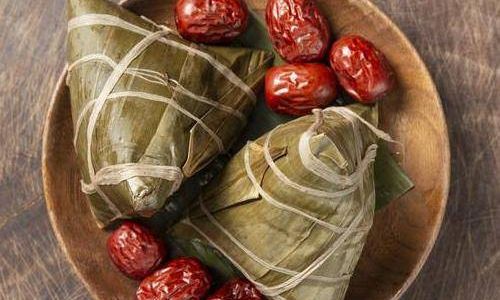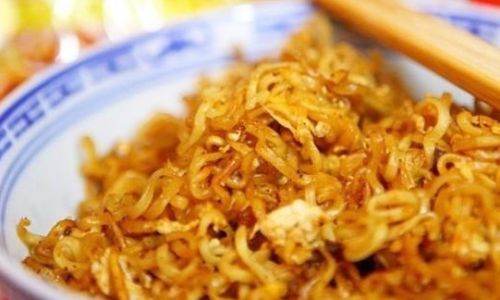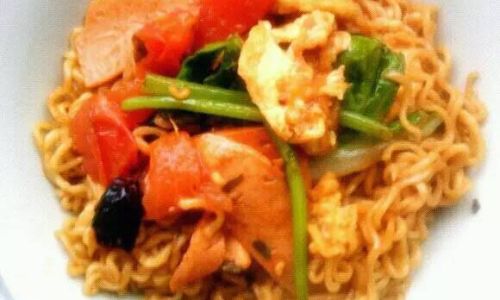Table of content
Zongzi, the iconic pyramid-shaped rice dumplings wrapped in bamboo or reed leaves, are a beloved culinary tradition in many Asian cultures, particularly during the Dragon Boat Festival. While homemade zongzi requires meticulous preparation, store-bought versions offer convenience without compromising taste. However, one common dilemma for home cooks is determining the optimal cooking time to ensure these dumplings are thoroughly heated, tender, and safe to eat. This article delves into the science, techniques, and tips for cooking store-bought zongzi to perfection, whether frozen, refrigerated, or vacuum-sealed.

Understanding Zongzi Varieties and Their Cooking Requirements
Before diving into cooking times, it’s essential to recognize that store-bought zongzi come in various forms, each requiring slightly different handling:
- Frozen Zongzi: These are typically sold in the freezer aisle and may be raw or partially cooked. They require the longest cooking time due to their frozen state.
- Refrigerated Zongzi: Often found in chilled sections, these are usually pre-cooked and need reheating rather than full cooking.
- Vacuum-Sealed Zongzi: Shelf-stable and pre-cooked, these require minimal cooking time but still need thorough heating.
The filling inside—such as red bean paste, pork belly, or salted egg yolk—does not significantly affect cooking time, but the size and thickness of the dumpling do. Larger zongzi (over 200 grams) may need extra minutes to ensure even heating.
Cooking Methods and Recommended Times
Boiling (Most Common Method)
Boiling is the traditional way to cook zongzi, as it evenly distributes heat and retains moisture.
-
Frozen Zongzi:
- Fill a large pot with enough water to submerge the dumplings completely.
- Bring the water to a rolling boil, then gently add the zongzi.
- Cooking Time: 45–60 minutes.
- Tip: Add a pinch of salt to the water to prevent the leaves from splitting.
-
Refrigerated Zongzi:
- Follow the same boiling method but reduce the time.
- Cooking Time: 20–30 minutes.
-
Vacuum-Sealed Zongzi:
- These are often pre-steamed, so boiling is optional. If reheating:
- Cooking Time: 10–15 minutes.
Pressure Cooking (Instant Pot)
Pressure cooking slashes cooking time by up to 50%, making it ideal for frozen zongzi.
-
Frozen Zongzi:

- Place a trivet or steamer basket in the Instant Pot.
- Add 1 cup of water and arrange the zongzi (avoid overcrowding).
- Cooking Time: 25–30 minutes on high pressure, followed by a natural release.
-
Refrigerated/Vacuum-Sealed Zongzi:
- Cooking Time: 8–12 minutes on high pressure.
Steaming
Steaming preserves the zongzi’s shape and texture while gently reheating it.
- Use a bamboo steamer or a metal steamer basket lined with parchment paper.
- Frozen Zongzi: Steam for 50–60 minutes.
- Refrigerated/Vacuum-Sealed: Steam for 15–20 minutes.
Microwave Cooking (Quick but Risky)
While convenient, microwaving can dry out zongzi or create uneven heating.
- Wrap each dumpling in a damp paper towel.
- Frozen Zongzi: Microwave on high for 5–7 minutes, flipping halfway.
- Refrigerated/Vacuum-Sealed: 2–3 minutes per dumpling.
- Caution: Always test the temperature in the center to avoid cold spots.
Signs of a Perfectly Cooked Zongzi
- Texture: The glutinous rice should be soft, sticky, and translucent, not crunchy or mushy.
- Leaf Color: The leaves should darken slightly but remain intact.
- Aroma: A faint, sweet scent of bamboo or reed leaves should emerge.
- Temperature Check: Insert a thermometer into the center—it should read at least 74°C (165°F) to ensure food safety.
Common Mistakes to Avoid
- Undercooking: Leads to hard rice and potential bacterial risk.
- Overcooking: Results in a gummy texture and broken leaves.
- Skipping Thawing: Adding frozen zongzi to boiling water shocks the rice, causing uneven cooking.
- Using Too Little Water: The water level must stay above the zongzi throughout cooking to prevent drying out.
Troubleshooting Guide
-
My Zongzi Is Still Cold in the Center:
- Extend cooking time by 10-minute increments.
- For microwaves, use a lower power setting (50%) for longer.
-
The Leaves Are Falling Apart:
Reduce cooking time or lower the heat to a simmer.
-
The Rice Is Too Dry:
Add a tablespoon of oil or a splash of water to the cooking liquid.

Storage and Reheating Tips
-
Leftover Cooked Zongzi:
- Store in an airtight container in the refrigerator for up to 3 days.
- Reheat by steaming (5–7 minutes) or microwaving (1 minute with a damp towel).
-
Freezing Cooked Zongzi:
- Wrap tightly in plastic wrap and freeze for up to 3 months.
- Thaw overnight in the refrigerator before reheating.
Cultural and Regional Variations
Zongzi recipes vary widely across Asia, influencing cooking times:
- Sweet Zongzi (e.g., red bean, jujube): May cook slightly faster due to lower fat content.
- Savory Zongzi (e.g., pork, mushroom): Richer fillings retain heat longer, so slightly shorter cooking times suffice.
The Science Behind Cooking Zongzi
Glutinous rice, the primary ingredient, contains high amylopectin starch, which gelatinizes between 60–80°C (140–176°F). Proper cooking ensures full gelatinization, creating the signature sticky texture. Frozen zongzi requires extra time to thaw and heat through, while pre-cooked versions only need reheating to activate the starch’s memory.
Conclusion
Mastering the cooking time for store-bought zongzi hinges on understanding its initial state (frozen, refrigerated, or vacuum-sealed) and employing the right method. Whether you prefer boiling, steaming, or pressure cooking, patience and attention to detail guarantee a delightful culinary experience. By following these guidelines, you’ll transform a simple store-bought dumpling into a tender, aromatic treat that honors tradition while fitting seamlessly into modern life.
Final Tip: Experiment with dipping sauces like soy sauce mixed with chili oil or sweetened bean paste to elevate your zongzi experience. Bon appétit!






0 comments